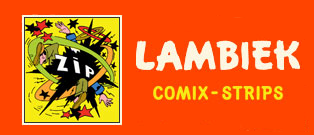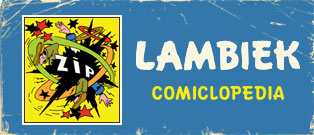Catchpenny print about 19th-century Dutch captain Jan van Speijk.
Alexander Cranendoncq was a Dutch 19th-century engraver, publisher, art dealer, book salesman and woodcutter, known as an illustrator of several educational and edifying "catchpenny prints".
Life and work
Not much is know about the life of Alexander Cranendoncq. He was born in 1799 in Maassluis, a town west of Rotterdam, and he died in 1869 in the city of Nijmegen. A large part of his professional life was spent in Zutphen. In a 19th-century dictionary of artist biographies from the Netherlands, 'Geschiedenis der Vaderlandsche Schilderkunst' by Van Eynden and Van der Willigen, we learn that Cranendoncq studied the art of engraving under Jan Oortman, an artist from Amsterdam. In 1819, Cranendoncq was praised for his woodcut picture series 'Proeven van Houtsneden, door A. Cranendoncq'. In the following year, the Nederlandsche Huishoudelijke Maatschappij ("Dutch Domestic Society") honored him with a Gold Medal and a prize of 25 ducats. As a woodcutter and engraver, Alexander Cranendoncq was an artist for several educational picture story prints, released by printers like J. de Lange in Deventer, Mindermann in Amsterdam, J. Noorduyn in Gorinchem and Brepols & Dierckx Zoon in Turnhout.
Print about Dutch beneficence, made for the Society of Public Welfare (1850).
Catchpenny prints
Since the invention of printing, several European countries had a long tradition of picture story prints, meant for the entertainment and education of the poorer parts of society. In France, the so-called Épinal prints presented idealized depictions of historical events and "true stories". The Germans called them "Bilderbogen". In the Dutch-speaking parts of the Low Countries, these prints reflected the religious, ethical, social and pedagogical views of their time. Known as catchpenny prints ("centsprent"), children's prints, folk prints or "little lad's papers" ("mannekensbladen"), they were mass-produced, often on cheap paper, with rudimentary artwork and text captions with simple rhymes. Often, the texts were presented in both Dutch and French language.
The early prints presented stories in a scandalous and sensational way, including depictions of boozing, carnal desires and defecation. During the 19th century, the Dutch Society for Public Welfare ("Maatschappij tot Nut van 't Algemeen") urged printers to focus on educational tales for the youth, resulting in the prints becoming more cautionary and edifying. Still, many of the tales from previous centuries remained in print, sometimes with a revised text. Even though they were aimed at the poor, the catchpenny prints reached all layers of society. Historically, the stories give an accurate account of the everyday life and beliefs of common people, revealing long-forgotten games that children used to play, school life and the many merchants that walked the streets.
During a period of about 250 years, starting in the late 17th century and lasting roughly until the 1930s, millions of catchpenny prints were sold in the Netherlands alone. Some had print runs of 500,000 copies, an impressive amount considering the fact that the Netherlands had a population of only a couple of million people at the time. Originally using woodcuts and a hand-press, the printers gradually moved on to other techniques, including wood engraving and lithography. This allowed the artwork to become more detailed and the prints to reach a higher circulation. Since they were mass-produced and not considered art, names of the actual illustrators have been lost in history. Most prints only mention the name of the printer or retailer. Still, the origin of many prints remain unknown, as printing blocks were often resold, leading to many reprints. Only a couple of Dutch catchpenny prints have included the initials or full names of the actual woodcutter or engraver. Among the known names are Alexander Cranendoncq, Jan Christoffel Jegher, Dirk and Hermanus van Lubeek, Hendrik Numan and Jan and Gerrit Oortman.
Three of the nine children's games, depicted by Alexander Cranendoncq.
Cranendoncq prints
Active during the 19th century, Alexander Cranendoncq was one of the artists working on mostly educational and elevating catchpenny prints. His prints showed people and their professions, children's games and historical events. One of his prints showed the life of Dutch naval hero Jan van Speijk, who sacrificed himself during the Belgian Revolution, another one depicted the 1828 Russian-Turkish war. One notable Cranendoncq print made for printer J. de Lange in Deventer presented a great many children's games of the day. In nine images, the print not only showed riding a goat cart, a ride on the merry-go-round and archery, but also activities that are far more shocking to modern-day audiences, like having a bear dance with a whip, shooting a living bird from a pole and hitting off the head of a goose. Other prints, made for printer J. Noorduyn in Gorinchem, presented Dutch inventions, African tribes and people from Europe in their traditonal costumes. A Cranendoncq print released by Mindermann in Amsterdam showed sixteen people in their professions, including merchants of mousetraps and bellows, kettles and irons, fish, bleached linen, figurines and hammers.
Part of a print with scenes from a child's life.
Several prints used farcical stories, sometimes with animal characters, to illustrate how not to behave. For Brepols & Dierckx Zoon, Cranendoncq created a print inspired by the fairytale character Tom Thumb. Born out of a cabbage, Tom is naughty and sent away from school. After teasing his mother, he falls into milk, and is eaten by a cow. Then the cow is sold and slaughtered by the butcher, and Thumb crawls out. He recovers in a hospital and becomes a rope maker, steals food from a beggar and finally drowns. Often reused characters in prints about the division of roles between men and women were the wimpy Jan de Wasser and his demanding wife Griet. Instructed by his wife, Jan does all the household chores, including the raising of their child. Cranendoncq is credited with at least one of these retellings, printed by T.J. Wijnhoven Hendriksen under the title 'Hier Heeft Men 't Leven en Bedrijf, Van Jan de Wasser en zijn Wijf'. A Dutch artist who made an earlier woodcut picture story about Jan de Wasser was Hendrik Numan.
In the Noorduyn print 'Den Oorsprong, Voortgang en het Einde van het Menschelijk Leven', Cranendoncq visualized the course of human life, starting with birth and then going from playful and naughty child to devout and dutiful adult, before unavoidably ending with death. Sometimes, Cranendoncq worked directly for the Society for Public Welfare, for instance a 1850 print about Dutch beneficence, telling of an orphan boy who grows up to become "diligent, good, wise and happy". In 1824 and 1827, Alexander Cranendoncq released two picture books under the title 'Een Boekje met Prentjes, Waarbij Wat te Lezen Staat, Voor Brave Kinderen' ("A Book with Pictures, With Something to Read, for Good Children").







